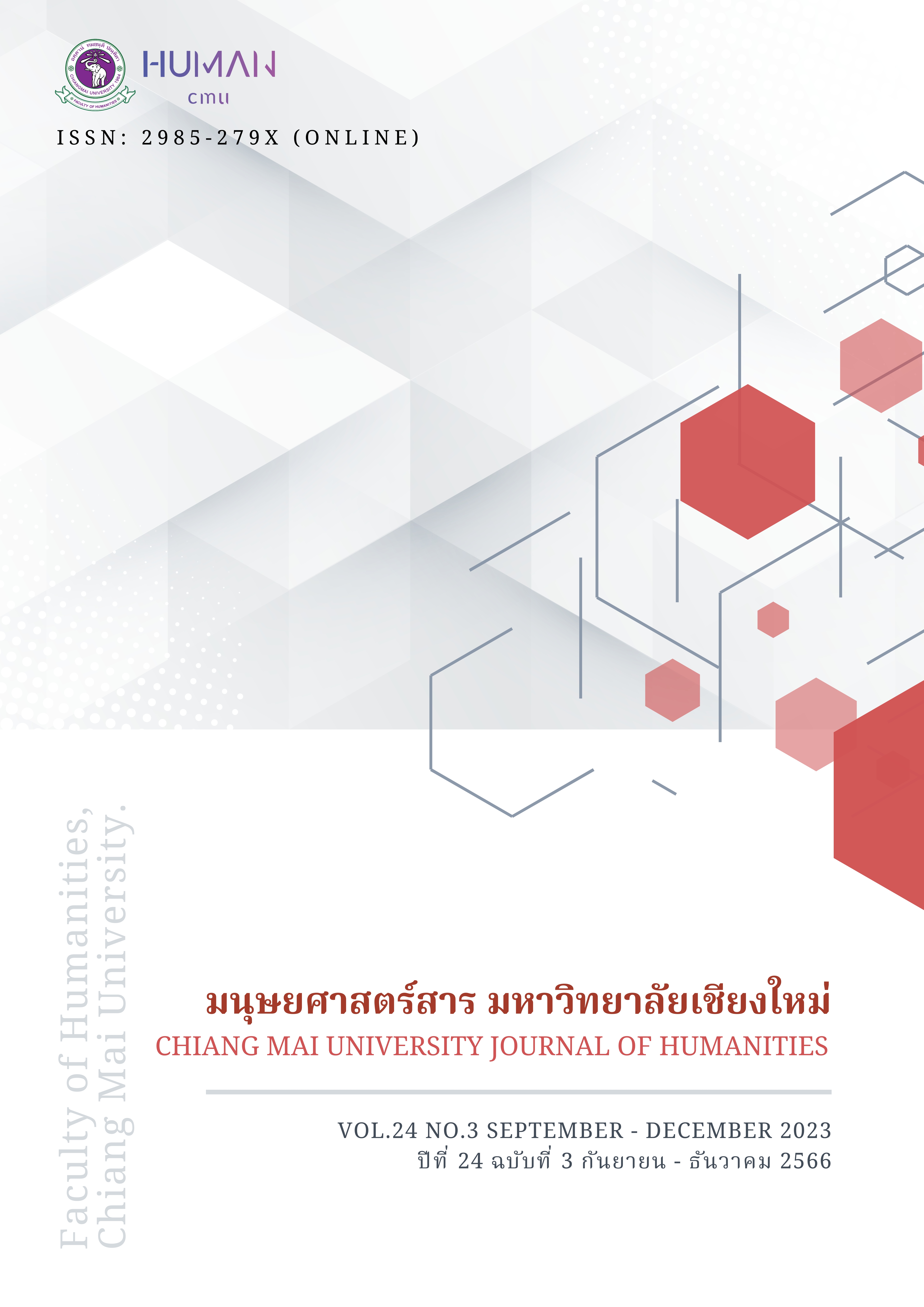การ ตั้งเป้าหมายส่วนบุคคล การมองโลกในแง่ดี ความหวังและความพึงพอใจในชีวิตของผู้สูงอายุในศูนย์สร้างสุขทุกวัย กรุงเทพมหานคร
Main Article Content
บทคัดย่อ
การวิจัยครั้งนี้มีวัตถุประสงค์เพื่อ 1) ศึกษาระดับการตั้งเป้าหมายส่วนบุคคล การมองโลกในแง่ดี ความหวัง และความพึงพอใจในชีวิตของผู้สูงอายุ 2) ศึกษาเปรียบเทียบความพึงพอใจในชีวิตของผู้สูงอายุตามปัจจัยส่วนบุคคล 3) ศึกษาความสัมพันธ์ระหว่างการตั้งเป้าหมายส่วนบุคคล การมองโลกในแง่ดี ความหวังกับความพึงพอใจในชีวิตของผู้สูงอายุ และ 4) ศึกษาอิทธิพลของการตั้งเป้าหมายส่วนบุคคล การมองโลกในแง่ดี และความหวังที่มีผลต่อความพึงพอใจในชีวิตของผู้สูงอายุ กลุ่มตัวอย่างในการวิจัย คือ ผู้สูงอายุที่มาใช้บริการในศูนย์สร้างสุขทุกวัย กรุงเทพมหานคร จำนวน 250 คน โดยสุ่มตัวอย่างแบบชั้นภูมิ เก็บรวบรวมข้อมูลโดยใช้แบบสอบถาม สถิติที่ใช้ในการวิเคราะห์ข้อมูล คือ สถิติเชิงพรรณนา ค่า t-test ค่า F-test ทดสอบความแตกต่างรายคู่โดยวิธี LSD ค่าสัมประสิทธิ์สหสัมพันธ์เพียร์สัน และการวิเคราะห์ถดถอยพหุคูณ
ผลการวิจัย พบว่า 1) การตั้งเป้าหมายส่วนบุคคล การมองโลกในแง่ดี ความหวัง และความพึงพอใจในชีวิตของผู้สูงอายุอยู่ในระดับสูง 2) ผู้สูงอายุที่มีระดับการศึกษาและภาวะสุขภาพที่แตกต่างกันมีความพึงพอใจในชีวิตแตกต่างกันที่ระดับนัยสำคัญทางสถิติ .05 และ .01 ตามลำดับ 3) การตั้งเป้าหมายส่วนบุคคล การมองโลกในแง่ดี ความหวังมีความสัมพันธ์ทางบวกกับความพึงพอใจในชีวิต และ 4) การตั้งเป้าหมายส่วนบุคคล การมองโลกในแง่ดี และความหวัง สามารถร่วมพยากรณ์ความพึงพอใจในชีวิตของผู้สูงอายุได้ร้อยละ 70.30 จากผลการวิจัยชี้ให้เห็นถึงความสำคัญของการตั้งเป้าหมายส่วนบุคคล การมองโลกในแง่ดี และความหวังในการส่งเสริมความพึงพอใจในชีวิตของผู้สูงอายุ ดังนั้นหน่วยงานที่เกี่ยวข้องจึงควรหาแนวทางในการพัฒนาการตั้งเป้าหมายส่วนบุคคล การมองโลกในแง่ดี และความหวัง เพื่อความพึงพอใจในชีวิตที่เพิ่มขึ้นของผู้สูงอายุ
Article Details

อนุญาตภายใต้เงื่อนไข Creative Commons Attribution-NonCommercial-NoDerivatives 4.0 International License.
เอกสารอ้างอิง
กนิษฐา ลิ้มทรัพย์. (2557). การตระหนักรู้ในตนเอง การมองโลกในแง่ดี ความพึงพอใจในชีวิตและความผาสุกทางจิตวิญญาณของผู้สูงอายุในศูนย์บริการผู้สูงอายุดินแดง เขตดินแดง กรุงเทพมหานคร [วิทยานิพนธ์ปริญญามหาบัณฑิต, มหาวิทยาลัยเกษตรศาสตร์]. Digital Research Information Center. https://dric.nrct.go.th/Search/SearchDetail/283207
ชมพูนุท พรหมภักดิ์. (2556). การเข้าสู่สังคมผู้สูงอายุของประเทศไทย (Aging society in Thailand). บทความวิชาการ สำนักวิชาการ สำนักงานเลขาธิการวุฒิสภา, 3(16), 1-19.
ธนิตา สมบูรณ์. (2553). การตั้งเป้าหมายส่วนบุคคล ความสำเร็จในอาชีพ การปรับตัวหลังเกษียณ และความพึงพอใจในชีวิตของวุฒิอาสาธนาคารสมอง ในเขตกรุงเทพมหานครและปริมณฑล [วิทยานิพนธ์ปริญญามหาบัณฑิต, มหาวิทยาลัยเกษตรศาสตร์]. Digital Research Information Center. https://dric.nrct.go.th/index.php?/Search/SearchDetail/262689
นงลักษณ์ วิรัชชัย. (2555). การกำหนดขนาดตัวอย่างในการทดสอบสมมุติฐานวิจัย [เอกสารที่ไม่ได้ตีพิมพ์]. สำนักงานคณะกรรมการวิจัยแห่งชาติ (วช.).
ปฐมพร ธรรมธวัช. (2555). ความสัมพันธ์ของการเตรียมตัวก่อนเข้าสู่วัยสูงอายุและความพึงพอใจในชีวิตของผู้สูงอายุในเทศบาลนครนครศรีธรรมราช จังหวัดนครศรีธรรมราช. วารสารวิชาการศรีปทุม ชลบุรี, 10(3), 88-94. https://www.chonburi.spu.ac.th/journal/booksearch/upload/1320-1307_13.pdf
วรเวศม์ สุวรรณระดา, วิราภรณ์ โพธิศิริ, มนทกานต์ ฉิมมามี, ธนานนท์ บัวทอง, บุศริน บางแก้ว, จุติเทพ อำนาจพรประสิทธิ์, ฐิตินันท์ ผิวนิล, และ นิชกานต์ แก้วบัวดี. (2565). โครงการการทบทวน สังเคราะห์ และจัดทำข้อเสนอยุทธศาสตร์การขับเคลื่อนงานผู้สูงอายุไทย. https://thaitgri.org/?wpdmpro=
สำนักงานนันทนาการและการส่งเสริมการเรียนรู้. (ม.ป.ป.). ศูนย์สร้างสุขทุกวัยกรุงเทพมหานคร [ใบปลิว]. กรุงเทพฯ: สำนักวัฒนธรรม กีฬา และการท่องเที่ยว.
สำนักงานสถิติแห่งชาติ. (2564). จำนวนประชากรจากการทะเบียน จำแนกตามอายุ เพศ ภาค และจังหวัด พ.ศ. 2564. กระทรวงดิจิทัลเพื่อเศรษฐกิจและสังคม. http://statbbi.nso.go.th/staticreport/Page/sector/TH/report/sector_01_11101_TH_.xlsx
Au, A., Ng, E., Lai, S., Tsien, T., Busch, H., Hofer, J., Lam, C., & Wu, W. (2015). Goals and Life Satisfaction of Hong Kong Chinese Older Adults. Clinical Gerontologist, 38(3), 224-234. https://doi.org/10.1080/07317115.2015.1008117
Celik, S. S., Celik, Y., Hikmet, N., & Khan, M. M. (2017). Factors Affecting Life Satisfaction of Older Adults in Turkey. The International Journal of Aging and Human Development, 87(4), 392-414. https://doi.org/10.1177/0091415017740677
Diener, E. (1984). Subjective well-being. Psychological Bulletin, 95, 542-575. https://doi.org/10.1037/0033-2909.95.3.542
Dufault, K., & Martocchio, B. C. (1985). Hope: Its Spheres and Dimensions. Nursing Clinics of North America, 20(2), 379-391. https://doi.org/10.1016/S0029-6465(22)00328-0
Dumitrache, C. G., Windle, G., & Herrera, R. R. (2015). Do social resources explain the relationship between optimism and life satisfaction in community-dwelling older people? Testing a multiple mediation model. Journal of Happiness Studies, 16(3), 633-654. https://doi.org/10.1007/s10902-014-9526-3
Elmståhl, S., Berglund, J., Fagerström, C., & Ekstrom, H. (2020). The Life Satisfaction Index-A (LSI-A): Normative Data for a General Swedish Population Aged 60 to 93 Years. Clinical Interventions in Aging, 15, 2031-2039. https://doi.org/10.2147/CIA.S275387
Herth, K. (1990). Fostering hope in terminally-ill people. Joumal of Advanced Nursing, 15(11), 1250-1259. https://doi.org/10.1111/j.1365-2648.1990.tb01740.x
Herth, K. (1992). Abbreviated Instrument to measure hope: development and psychometric evaluation. Journal of Advanced Nursing, 17(10), 1251-1259. https://doi.org/10.1111/j.1365-2648.1992.tb01843.x
Khodabakhsh, S. (2022). Factors Affecting Life Satisfaction of Older Adults in Asia: A Systematic Review. Journal of Happiness Studies, 23, 1289–1304. https://doi.org/10.1007/s10902-021-00433-x
Leung, B. W.-C., Moneta, G. B., & McBride-Chang, C. (2005). THINK POSITIVELY AND FEEL POSITIVELY: OPTIMISM AND LIFE SATISFACTION IN LATE LIFE. Aging and Human Development, 61(4), 335-365. https://doi.org/10.2190/FQTB-EBAJ-H9WP-LMYA
Neugarten, B. L., Havighurst, R. J., & Tobin, S. S. (1961). The Measurement of Life Satisfaction. Journal of Gerontology, 16(2), 134-143. https://doi.org/10.1093/geronj/16.2.134
Olasupo, M. O., Idemudia, E. S., & Kareem, D. B. (2021). Moderated mediation roles of social connectedness and optimism on emotional intelligence and life satisfaction. Heliyon, 7(5), 1-8. https://doi.org/10.1016/j.heliyon.2021.e07029
Pahlevan Sharif, S., Amiri, M., Allen, K.-A., Sharif Nia, H., Khoshnavay Fomani, F., Hatef Matbue, Y., Goudarzian, A. H., Arefi, S., Yaghoobzadeh, A., & Waheed, H. (2021). Attachment: the mediating role of hope, religiosity, and life satisfaction in older adults. Health Qual Life Outcomes, 19(57), 1-10. https://doi.org/10.1186/s12955-021-01695-y
Palmore, E., & Kivett, V. (1997). Change in life satisfaction: a longitudinal study of persons aged 46-70. Journal of Gerontology, 32(3), 311–316. https://doi.org/10.1093/geronj/32.3.311
Salmela-Aro, K. (2009). Personal goals and well-being during critical life transitions: The four C's—Channelling, choice, co-agency and compensation. Advances in Life Course Research, 14(1), 63-73. https://doi.org/10.1016/j.alcr.2009.03.003
Scheier, M. F., & Carver, C. S. (1985). Optimism, coping, and health: Assessment and implications of generalized outcome expectancies. Health Psychology, 4(3), 219-247. https://doi.org/10.1037/0278-6133.4.3.219
Seligman, M. E. P. (2006). Learned Optimism: How to Change Your Mind and Your Life. Vintage.
Sener, A. (2010). FACTORS AFFECTING LIFE SATISFACTION IN OLD AGE. Turkish Journal of Geriatrics, 14(2), 179-186. https://doi.org/10.1177/0091415017740677
Shradha, M. (2014). Social network size and hope as predictors of life satisfaction in the elderly. Indian Journal of Health & Wellbeing, 5(8), 904-908.
Snyder, C. R., Harris, C., Anderson, J. R., Holleran, S. A., Irving, L. M., Sigmon, S. T., Yoshinobu, L., Gibb, J., Langelle, C., & Harney, P. (1991). The will and the ways: development and validation of an individual-differences measure of hope. Journal of Personality and Social Psychology, 60(4), 570-585. https://doi.org/10.1037/0022-3514.60.4.570


